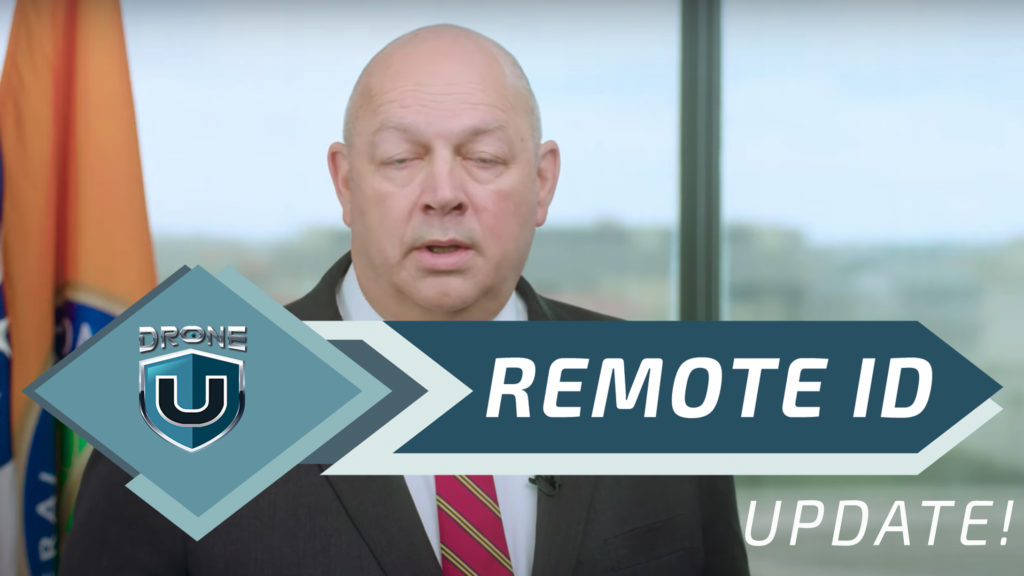
The FAA recently stated they would be publishing new rules for flight over people, night time operations and BVLOS. FAA administrator Steve Dickson also foreshadowed what drone pilots can expect with regards to Remote ID.
FAA administrator Steve Dickson addressed the drone industry during a virtual conference to announce new rules and Remote ID progress. Drone pilots are avidly awaiting the publishing of Remote ID, well….at least some are. Many other drone pilots have already dismissed the FAA’s proposed rules. Even the AMA and AOPA recently came out with a letter lambasting the FAA’s proposed rules. Stating that the Remote ID rules, as stated would eliminate recreational drone pilots.
While the industry awaits the final ruling of Remote ID, many question if the FAA will actually consider the 53,000 comments on the proposed rule. While we can all guess what the final rule will reveal, for now we can conjure only from the language the FAA uses.
While many pilots were paying attention to how RID would be discussed, others were wondering if the FAA would open the skies to more complex drone operations. The FAA hinted that drone users can expect to see new rules regarding flight over people and night time operations. The focus of the administrators talk was clearly to showcase how drone delivery is moving forward and how remote ID is moving forward. Yet the FAA’s clear lack of understanding practical operations remains more than evident.
New Regulatory Update of Remote ID
During this update to the industry, the FAA administrator used some very specific language that might foreshadow what to expect. The administrator stated that “drones will provide identification and location information that can be received by the FAA, law enforcement and anyone with a smart phone. This can only be interpreted to mean that anyone in the public will be able to see who is flying what drone.
How will the mass collection of drone data and American pilots be legal?
Didn’t a Federal judge just state that mass collection of data over cellular networks was a 4th Amendment violation? Actually the judge said specifically:
“The panel held that the government may have violated the Fourth Amendment when it collected the telephony metadata of millions of Americans.”
If the public will be able to see drone flight and pilot information, then the FAA clearly did not listen to a vast majority of the comments regarding privacy for drone pilots. Just like how drivers receive privacy with their license plates, drone pilots need the same privacy.
While the speech foreshadows what drone pilots can expect from Remote ID, it also foreshadows that the FAA might have skipped the comments section. It wouldn’t surprise any drone pilot if the FAA just outright ignores the 53,000 comments on RID. The FAA clearly views the 107 pilots as the skateboarders of the industry. This ideology could lead to total disaster, but only time will tell.
FAA announced that drone pilots can expect new rules to allow for more routine operations of flight over people. This is particularly exciting for existing drone pilots. We’re hoping that the FAA clarifies flying over moving vehicles. They’ve stated this is not allowed, but have yet to enforce a single instance (that we have found).
FAA also stated to expect new systems and processes to open up the waiver process to drone pilots. Pilots should be able to more easily file fly over people or fly routinely at night. We expect the FAA may even change Part 107 to allow for higher levels of certification. We shall see what unfolds.
FAA stated falsehoods.
During the speech from FAA Administrator Steve Dickson, he stated that “drone pilots most show they can be safely integrated into the national airspace.” Wait what? While this is the first piece of evidence that showcases the FAA has not read RID comments, it is also an outright falsehood. How have drone pilots not shown we’re safe?
Remember, Brendan Schulman from DJI put statistics in his RID comment on the current usage statistics of drones. Take the number of drone flights, divided by crashes, then you would quickly realize that drone pilots are the safest group of aviators in aviation history. Mr. Dickson, while we appreciate that you call all drone operators pilots, you should also know we’re statistically the safest. Thus drone pilots do not need to prove they can be safe. In fact, we would ask the FAA to prove how remote ID is safe, and how it does not violate existing federal laws……
Timing
When can drone pilots expect these new regulations and a remote ID update? FAA administrator stated that drone pilots can expect an announcement of the final ruling on Remote ID by the end of the year. If we use history as our guide, then the day after Christmas will be slammed for all drone pilots while regulators sip their tea on vacation.
How will the industry respond to the FAA’s proposed Remote ID rules and regulatory updates? As of writing this article, the speech from the administrator only had 857 views on youtube and was posted 6 days ago.







Add Your Comment